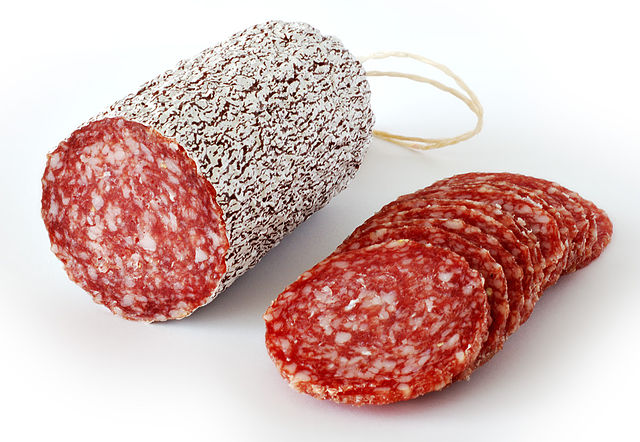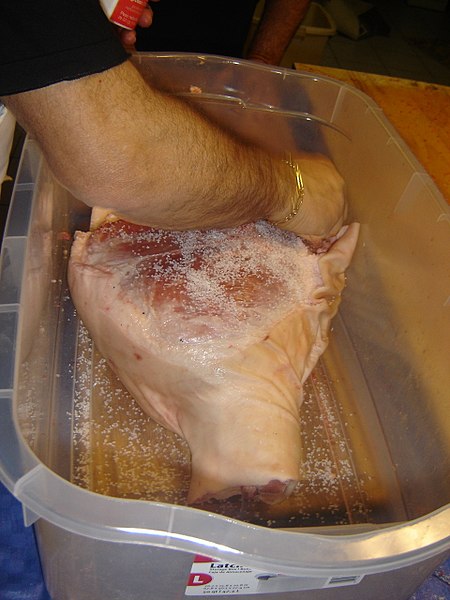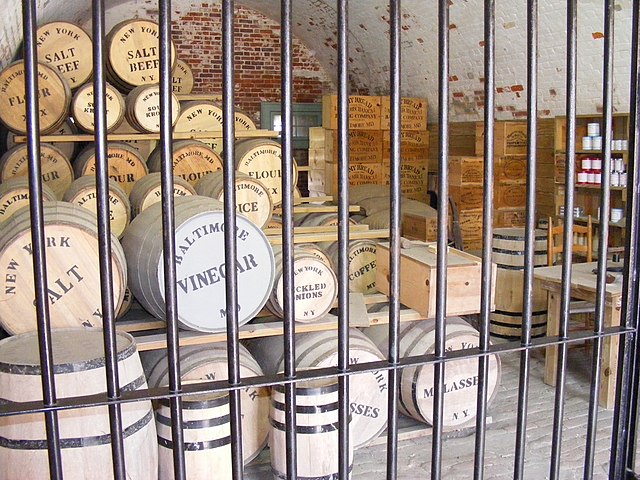Salami is a cured sausage consisting of fermented and air-dried meat, typically pork. Historically, salami was popular among southern, eastern, and central European peasants because it can be stored at room temperature for up to 45 days once cut, supplementing a potentially meager or inconsistent supply of fresh meat. Countries and regions across Europe make their own traditional varieties of salami.
Winter salami
A salami shop in Italy
Hungarian Herz Salami poster, an advertisement from Budapest, 1900
Salami ageing in a cellar
Curing (food preservation)
Curing is any of various food preservation and flavoring processes of foods such as meat, fish and vegetables, by the addition of salt, with the aim of drawing moisture out of the food by the process of osmosis. Because curing increases the solute concentration in the food and hence decreases its water potential, the food becomes inhospitable for the microbe growth that causes food spoilage. Curing can be traced back to antiquity, and was the primary method of preserving meat and fish until the late 19th century. Dehydration was the earliest form of food curing. Many curing processes also involve smoking, spicing, cooking, or the addition of combinations of sugar, nitrate, and nitrite.
Sea salt being added to raw ham to make prosciutto
Curing salt, also known as "Prague powder" or "pink salt", is typically a combination of sodium chloride and sodium nitrite that is dyed pink to distinguish it from table salt.
Young man preparing a pig's head after a sacrifice. Vase v. 360–340 BC, National Archaeological Museum of Spain.
Barrels of salt beef and other products in a reconstruction of an American Civil War stockpile, at Fort Macon State Park, North Carolina








